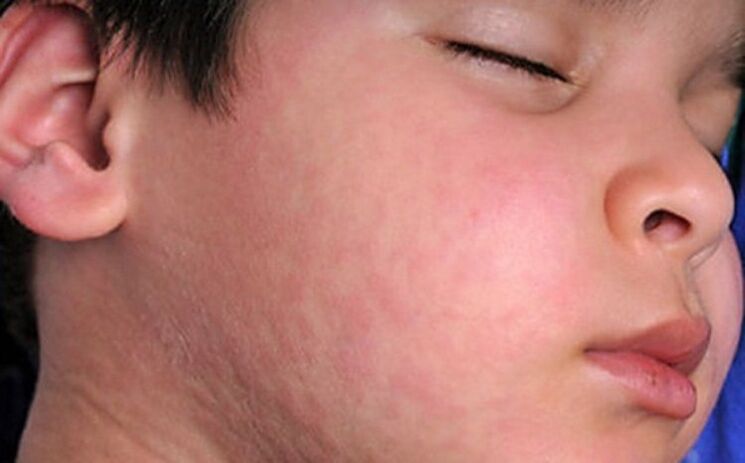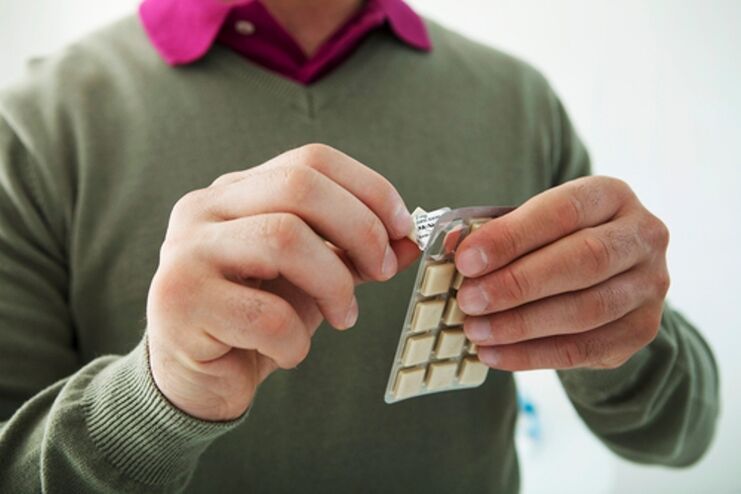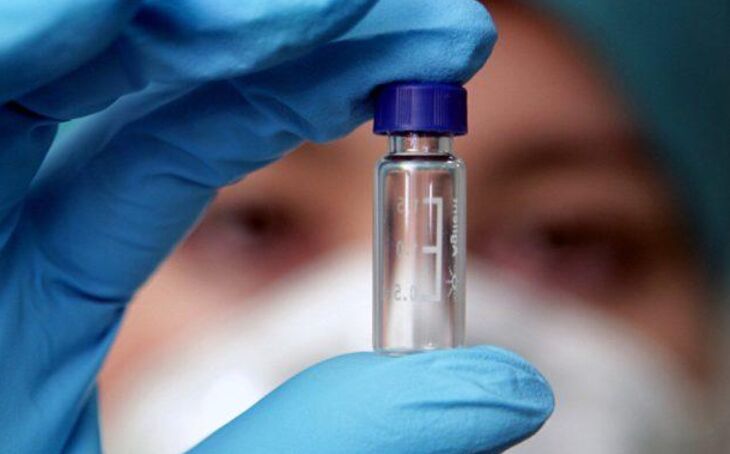
Worm eggs are very small in size. Invisible to the naked eye, they can be everywhere - in the ground, on the handrails of vehicles, on doorknobs, in children's sandboxes, on our pet's fur.
How can worm infections be prevented or if they do, how can dangerous complications be avoided?
Symptoms of helminthiasis in humans
No one can consider themselves immune to worms. Even with strict observance of the rules of hygiene. To reduce the risk of infection, you need to be informed as much as possible about the symptoms of helminthiasis in humans, and how to prevent and treat helminth infections.
The most common types of worms:
Roundworm.Parasites belong to the class of roundworms, roundworms of cross section. The length of the female reaches 350 mm, the male is much smaller. Roundworm is dangerous both in the intestinal stage and in the migratory stage.
Colonization of parasites in the intestinal tract in a complex form can lead to intestinal obstruction, adult roundworms escape through the respiratory tract with the risk of asphyxiation, biliary obstruction and other complications. The migratory stage threatens the penetration of larvae into the lungs and other organs with the appearance of serious pathologies.
Ascariasis occurs when the eggs of the parasite leave the intestines of the infected person in the feces and mature in the soil to the invasive stage.
- Diphyllobotrium latum.This is a class of barcodes, one of its representatives is a species of broad tapeworm. Their characteristic is that they have 3 owners. The main organisms in which worms develop into sexually mature individuals are humans and some animals (cats, dogs, pigs, etc. ). The intermediate hosts for diphyllobotrium latum are freshwater crustaceans. Intermediate replenishment - fish (perch, pike, burbot). Broad tapeworms are infected by eating undercooked fish infected with parasitic larvae - plerocercoids.
Pinworm.These are roundworms, like roundworms, but much smaller in size. Females are up to 10 mm in length, males - up to 5 mm. Enterobiasis is one of the most common helminths. Children are especially susceptible to them.
The most characteristic manifestation of trichiasis is itching in the anus. It is explained by the female going to the perianal area to lay eggs. In the folds of the skin, the mature embryo enters the invasive stage in 5-6 hours. Getting them on hands when scratching and then swallowing leads to reinfection.

Ways of infection
The mode of infection with worms is determined by the mode of entry of the parasites and the way in which they enter the host's body.
Most parasitic worms have two forms of infection - eggs (in some species of cestodes, they are called oncospheres) and larvae. The latter is sometimes called Finns or Cysticerci. Eggs are microscopic in size, usually several tens of micrometers. Larvae can range in size from a few to tens of millimeters.
Usually, worms are transmitted orally - through the mouth.But some types of parasites can enter through the skin or be bitten by an insect. When eggs are swallowed, the embryos contained within them shed their shells, penetrate the intestinal wall into the bloodstream, and are carried throughout the body by the blood. Depending on the type of parasite, they can colonize the liver, lungs, heart, pancreas, kidneys, brain, and eyes.
When infected with larvae, intestinal localization of the parasite most often occurs. Due to their considerable size, the larvae cannot enter the vessels and travel with the blood. They remain in the intestine, attach to the intestinal wall and develop to a sexually mature state, after which they begin to multiply.
Worm eggs usually leave the digestive tract in the feces. In some cases, for example, with filariasis, the evacuation of eggs from the intestinal tract can be carried out by fragments of worms - proglottids. They come out of the intestine on their own through the anus.

The main types of helminthic lesions
The effectiveness of the treatment of helminths in humans depends on how accurate the clinical picture and on the nature of the lesions caused by the parasites on the body are determined. And they, in turn, depend on the stage of entry - enteric or migratory.
Intestinal invasion stage.In the intestinal phase, the main damage to the patient's digestive system, specifically the gastrointestinal tract. Worms damage the lining of the intestines with their stings. This leads to inflammatory processes and disruption of the function of the gastrointestinal tract.
In addition to some nutrients being absorbed by the worms, the absorption function of the intestines is also impaired.Because the parasites secrete enzymes that reduce the digestive capacity of the digestive tract.. All this leads to the patient's body being deficient in nutrients, vitamins and trace elements.
In addition to antibodies, worms secrete other metabolites that are toxic to the host organism. Add to that the decomposition of dead worms. As a result, the patient's body is severely poisoned.
Some types of parasitic worms can penetrate from the gastrointestinal tract into nearby organs and tissues - the biliary tract, gallbladder, liver parenchyma and other systems. For example, adult roundworms with high infectivity are capable of entering the respiratory tract of the host. With a large number of parasites, mechanical obstruction of the intestine is possible. This can be observed both with roundworms and tapeworms.
When parasitic worms invade the liver parenchyma, abscesses can be formed, requiring surgical intervention. Intestinal perforation with the penetration of the contents of the gastrointestinal tract into the abdominal cavity and the development of peritonitis are not excluded. Due to the harmful effects of adult worms, it is possible to develop pancreatitis, cholecystitis and cholangitis.

migration phase.Because of the larval embryo's ability to penetrate almost any organ, the migratory invasion stage may exceed the intestinal stage in terms of the severity of consequences.
Larvae develop from eggs in organs and tissues forming foci of inflammation and invasion. If this occurs in the lungs, the invasion manifests into bronchitis, pneumonia, asthmatic syndrome.
If the parasite's eggs enter the brain (such as cestode oncospheres), single Finnish granules or multiple blisters will form in its tissues. Their size can reach the size of a tennis ball. Because the cysts are located near brain tissues, surgical removal of them carries a high risk of rupture of the purulent bladder and development of a secondary infection.
The patient's body is poisoned with metabolites of live worms and toxins from the decomposition of corpses leading to an allergic reaction. Their results were fever, skin manifestations, headache, and dizziness.

Symptom
The symptoms of a helminth infection depend on many factors. There are typical manifestations of a certain type of aggression, but there are very few of them.Most parasitic worms present with symptoms similar to other diseases.This makes diagnosis difficult. These common symptoms include:
- The state of total decline, physical and mental weakness.
- Nausea vomiting.
- Stool disturbances, constipation and diarrhea.
- Discomfort, heaviness, abdominal pain of different locales.
- Change your appetite up or down.
- Weight loss has no explanation. Including combating an increase in food intake.
- Itching around the anus, feeling like something is moving there.
- Allergic manifestations in the form of a rash on the skin.
- A cough.
- Shortness of breath, asthmatic syndrome.
- Chatter. Teeth grinding while sleeping is a typical manifestation of children with anal itching.
- Increased irritability, irritability, insomnia, chronic fatigue, depression.
- Headache.
- High temperature rise, usually low temperature. But sometimes it goes up to a high value.
- Dizzy.
In the early stages of an invasion, symptoms may be completely absent or so insignificant that they are not taken very seriously. In the future, with an increase in the intensity of the disease, the symptoms become more obvious.
Symptoms of human blood helminths can vary depending on which organs the migrating embryos have settled in.If their habitat is the lungs, the patient may develop a fever, difficulty breathing may occur.Usually in these cases the infection is accompanied by a cough - unexplained or sputum, which can be orange. It was later suggested that the larvae had damaged small blood vessels in the lungs.
The symptoms of helminthiasis are accompanied by nausea, vomiting, heaviness and pain in the abdomen, excessive salivation, diarrhea, and weight loss.
Attention.In cases of severe liver invasion, abscesses may develop with the breakthrough of purulent contents into the abdominal cavity. This progression of the disease is life-threatening.

Drug treatment
Treatment of these invasive diseases depends on many factors. The main ones are the type of parasitic worms, their place of residence, the stage of the disease (migratory or intestinal), the intensity of the infection, the condition of the patient. But in any case, the treatment should be ordered before the diagnosis of the disease.
The most common diagnostic test for parasitic worm infections is a stool test. If diagnostic is not sufficient, general immunological, biochemical, and/or enzymatic testing will be performed.Hardware diagnostics can also be used - ultrasound, radiography, MRI, etc. v.Visualizing the whole picture of the disease, the doctor prescribes an anthelmintic.
Importance.Treatment with drugs with strong active ingredients can cause side effects. This limits the use of the drug for some patients. Especially, for pregnant and lactating women, children under a certain age, patients with some infectious diseases, viruses.
To combat intestinal nematodes and destroy extraintestinal nematodes, various drugs are prescribed.
Importance.Usually two courses of treatment are carried out with a break between them of 2-3 weeks. This is because most antiviral drugs only kill adults. The larvae and their eggs are still intact. After the incubation period, a new generation of worms can emerge from them, the destruction of which will require a second wave.

The use of folk remedies
Treatment with folk methods takes longer than drug treatment. But this relative disadvantage is offset by the softness of herbal remedies and the absence of side effects.
There are many herbs that work as a dewormer - nettle, tansy, celandine, wormwood, horsetail and many more. Parasitic plants contain ingredients that are toxic to helminths, nematodes, and flukes and are often bitter in taste.
Many antihelminthic herbs also have antiseptic and antibacterial properties. Their effectiveness depends on the correct preparation and use of dosage forms. Here are some of the most popular herbal remedies and products. But you need to understand that this is only a very small part of what actually exists.

Pumpkin seeds
It would not be an exaggeration to say that pumpkin seeds are the most popular dewormer. They contain cucurbitin, which is very effective against nematodes and helminths. Pumpkin seeds are not only used to treat diseases, but also can be used to prevent diseases.
Almost all cucurbitin is contained in the membrane, located between the core and the shell.Therefore, it is best to consume unpeeled seeds. For treatment, you need to eat 300 g of seeds at a time. For disease prevention, adults use 100 g and children 70 g is enough. From pumpkin seeds, you can make a solution for enema, which has the effect of killing worms residing in the large intestine.
Garlic
Garlic is a popular medicine that is as effective as pumpkin seeds. It contains phytoncides and essential oils, which have a depressive effect on parasitic organisms. Garlic is highly active against nematodes, especially roundworms.
Soft drink
Parasitic worms do not tolerate alkaline conditions well, so baking soda is an effective medicine against them. It can be taken orally, but the greatest effect of sodium bicarbonate is obtained by preparing an enema solution from it. It should be used when localizing nematodes or helminths in the large intestine.
honey
Honey does not need to be advertised as a panacea, but not everyone knows that honey also has an anti-helminthic effect. To use for this purpose, you need half a teaspoon 9 times a day. During the course of treatment throughout the day, you need to refuse food.
The next day, only fresh vegetables are allowed. Because honey has no contraindications and side effects, it can be used to treat diseases for children. Give them a cup of soft drink with a teaspoon of honey.

carrot juice
Even official medicine, sometimes very strict about folk remedies, admits that carrot juice has a deworming effect. The amount of juice to drink at a time is not limited by any requirements, everything must be within reason.
Castor oil
Many types of roundworms and helminths colonize the intestines. Some laxatives work against them, especially the familiar castor oil. For adults, this recipe is suitable. 80 ml of cognac is mixed with castor oil and taken a sip before going to bed.
The procedure is carried out in 3 days. Children at 1-2 am are given a little sweet drink (juice, juice, tea), and after half an hour - 15-30 g of castor oil.
Inference
If the parasitic worms are not evident (for example, as whole or as fragments of them in the stool), it is almost impossible to determine the presence of an infestation on your own. Therefore, at the first appearance of symptoms that may indicate an infection, you should not hesitate to contact an infectious disease specialist.
In his arsenal there are tools that allow you to set up an invasion with a hundred percent probability. Delaying contact with the clinic or self-treating based on one's own diagnosis can sadly, even lead to death.






































